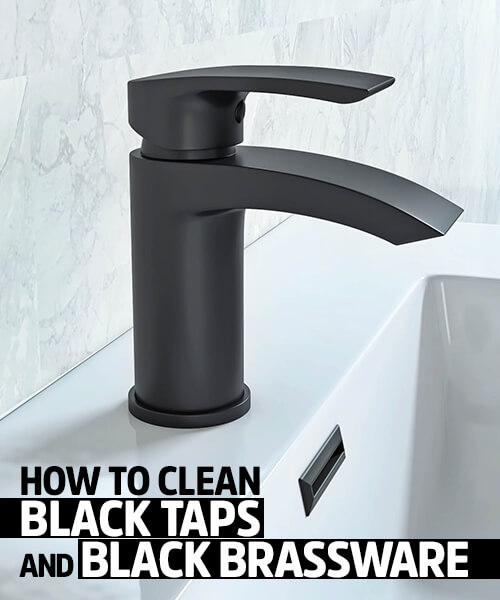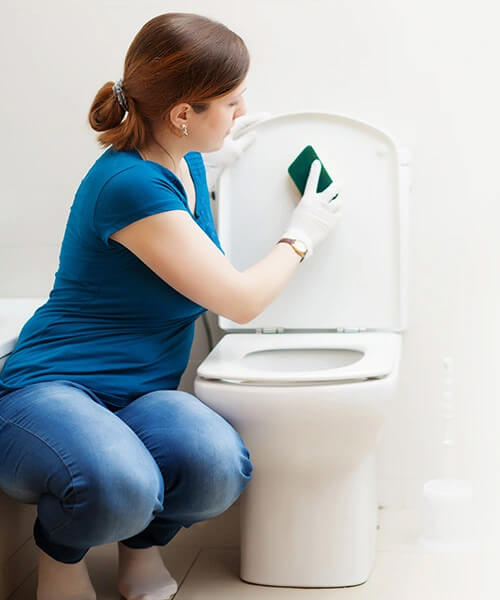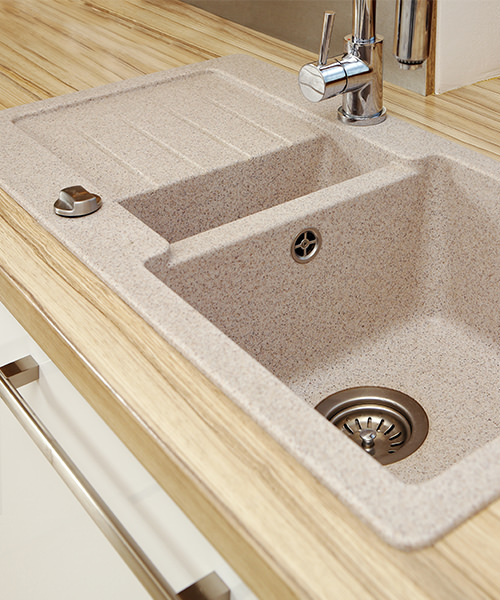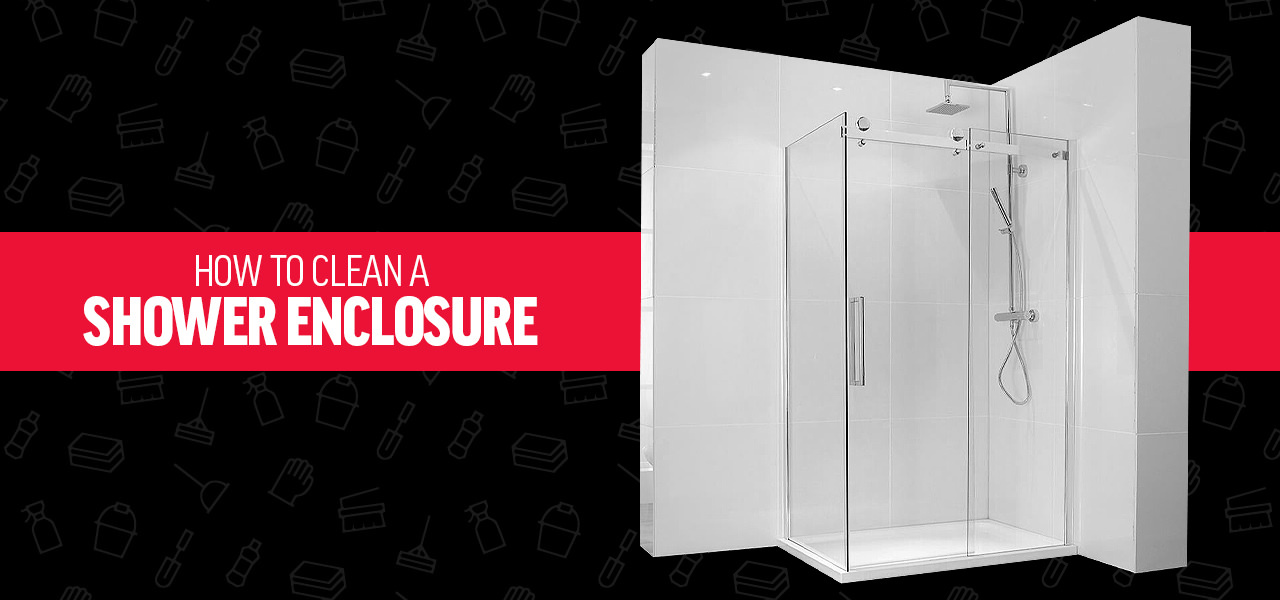
Showers allow you access to nature-like rainfall and waterfalls throughout the year. Not only do showers revive the body completely but also are more time and water efficient than other cleansing methods. Showers are usually constructed in a dedicated area within the bathroom and when enclosed, they are called 'shower enclosures'.
Why a shower enclosure?

The shower enclosure is the waterproof part of the bathroom, with the wet areas on the outside. With the right kind of enclosure, you get the privacy and appeal you need while the rest of the bathroom remains dry with no messy floors. What this also does is minimise the tedium of mopping and drying up the floor from time to time. Shower enclosures support showering routines which are quick and refreshing. They can adapt well into almost any setting with a tremendous variety of colour, size, configurations and installation.
Types of Shower Enclosures
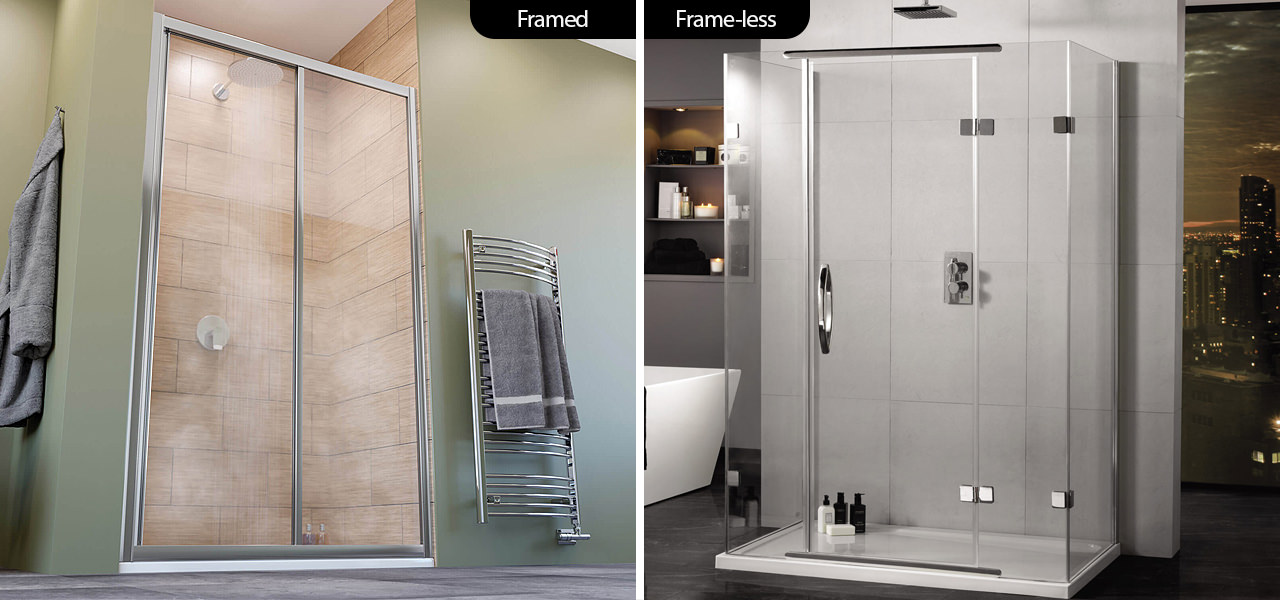
Shower enclosures can be Framed or Frameless. A framed model has a metal frame that holds the glass together while a frameless model is simply glass, with the use of metal restricted to the hinges only.
A frameless enclosure can come with a hinged shower door, sliding shower door or a bi-fold door, fabricated to measurement that gives a watertight finish.
Besides its benefits, the shower must also suit and fit into the layout of your bathroom. Showers can be curved, rectangular, square, or neo-angle. Other types of models include corner enclosures, quadrant shower enclosures, and semi-oval shower enclosures.
Why is regular cleaning and maintenance necessary?
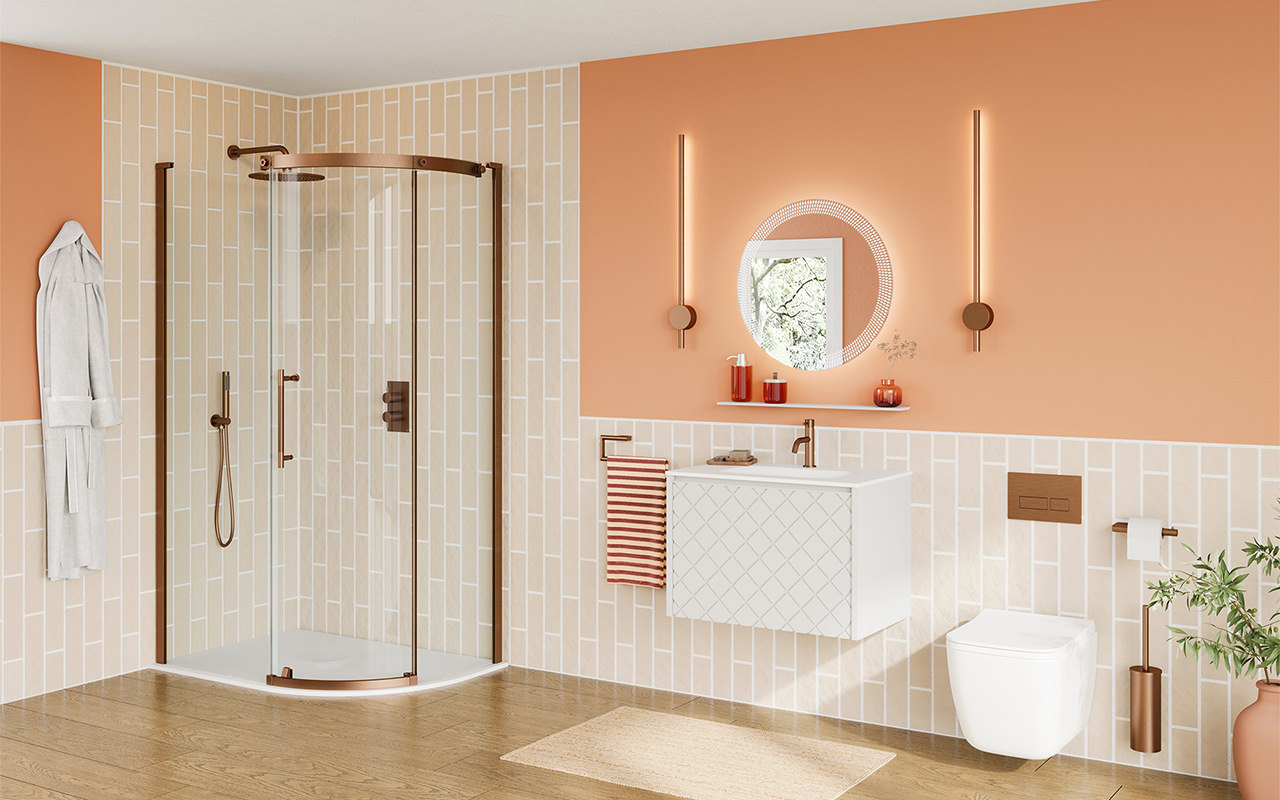
- A dry bathroom is a safe bathroom. Despite the water draining off, the surface can stay wet, posing a risk of slipping. So, cleaning and drying it off immediately after or at least at the day's end will keep the tray dry and also clean.
- Such a regular drying routine will help the tray remain germ and mould-free, promoting better hygiene. Moreover, germs and mould thrive in humid bathroom environments which can be exacerbated if you allow water, dirt, grime and residue to accumulate for days without cleaning.
- If you want to keep the bathroom space appealing then you must ensure that the enclosure is kept clean to keep it free of stains, and discourations and retain its original appearance for a long time.
- Enclosures use glass panels that attract limescale and soap scum and debris buildup. An erratic cleaning routine can compromise the visual appeal of the enclosure and the entire bathroom.
- With a regular cleaning routine, you have a sparkling room that reflects light as it is meant to, giving you a space that enables enjoyable showers.
- The right kind of maintenance is an absolute must for keeping the enclosure in good condition for years. This will keep damage, repair, maintenance and other costs as low as possible.
- A lax attitude to cleaning could lead to premature issues that compromise your budgets by generating expensive renovations or repairs. Plus, there are other vital considerations that must be factored in to keep the enclosure spick, span and shiny.
How to clean your shower enclosure?
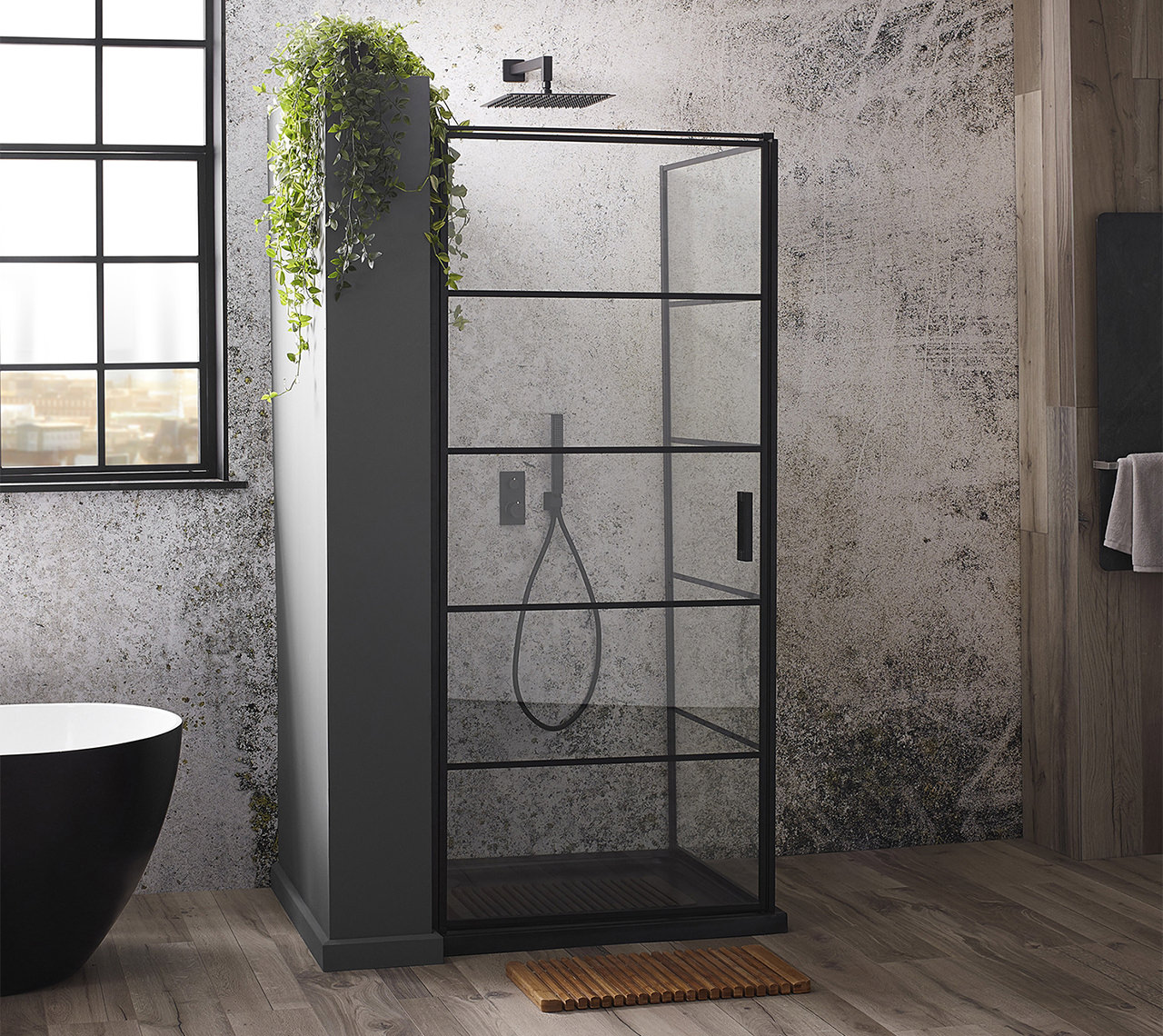
Showering area can be made of glass or acrylic and even tile. After selecting and correctly installing a shower enclosure, the next step is its regular cleaning and maintenance. It is absolutely essential for extending the life of the enclosure and minimising repairs. Though broadly the steps in the cleaning routine are the same, certain specifics may change depending on the material of the enclosure.
Types of Cleaners
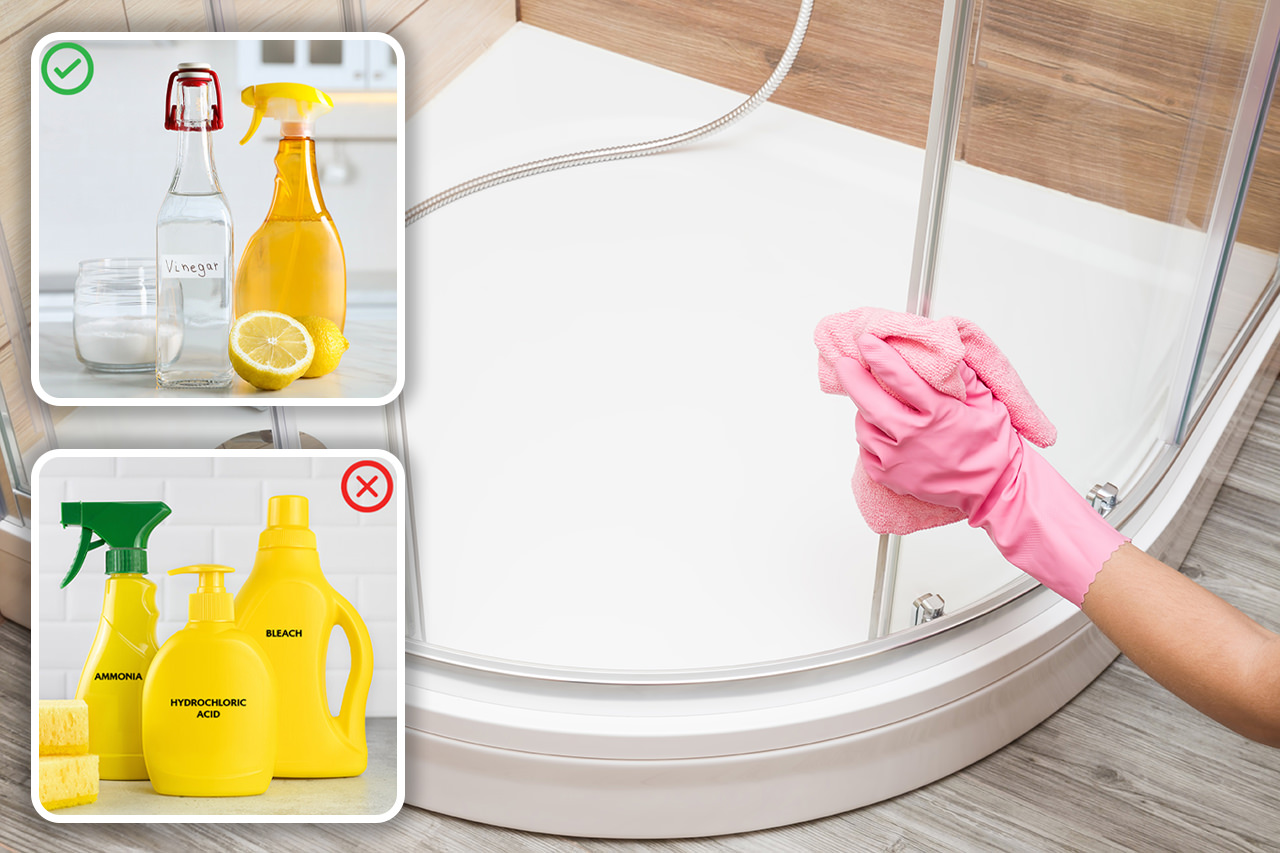
There are a variety of cleaning solutions that work to keep the enclosures or shower cubicle clean. You can choose an eco-friendly or natural cleaning agent or a store-bought one. Natural cleaners include white vinegar, lemon juice and baking soda, while commercial ones may have chemical cleaning agents. It's better to check the list of ingredients and stick to a mild chemical cleanser, if you prefer a ready-to-use formula. Avoid using ones that include ammonia, bleach or hydrochloric acid as active ingredients and you should be good to go.
Tools and Supplies
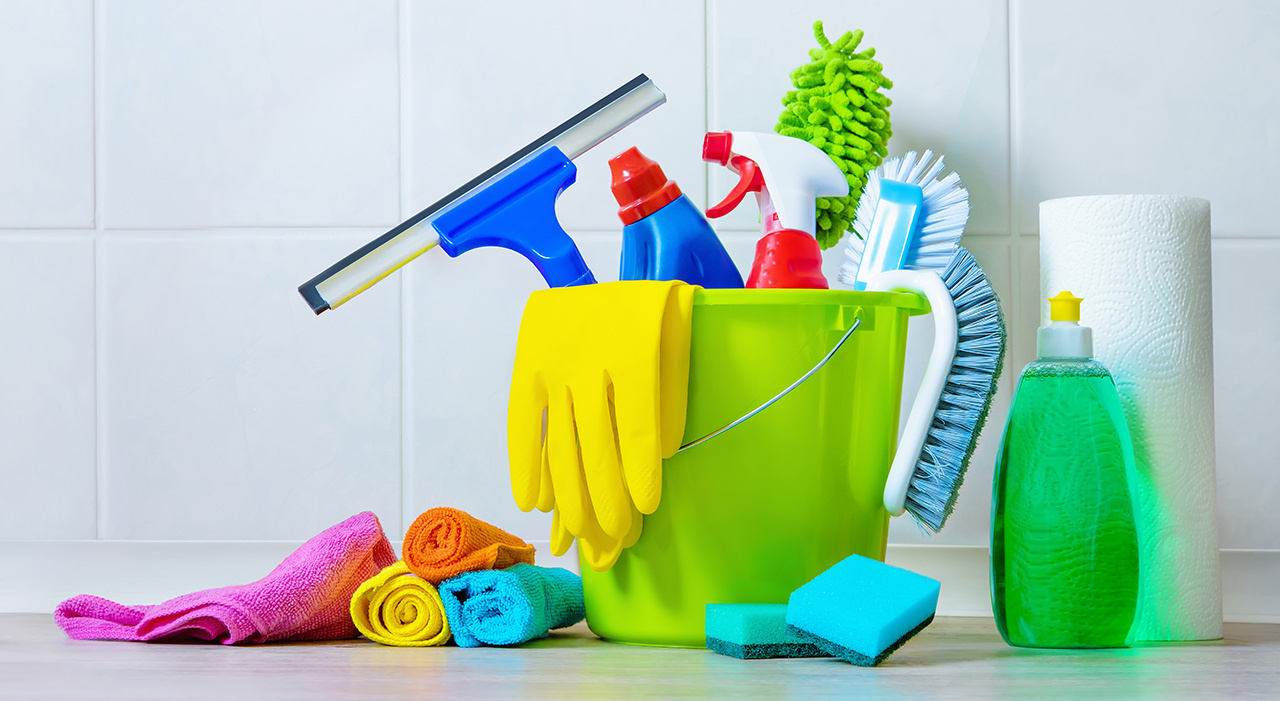
Assemble or keep at hand the following supplies:
- Non-abrasive sponge/squeeze
- Vinegar
- Non-toxic cleaners for shower glass/acrylic/tile
- Lime scale remover
- Liquid detergent
- Baking soda
- Microfibre cloth
- Masks/gloves
Safety Precautions When Cleaning
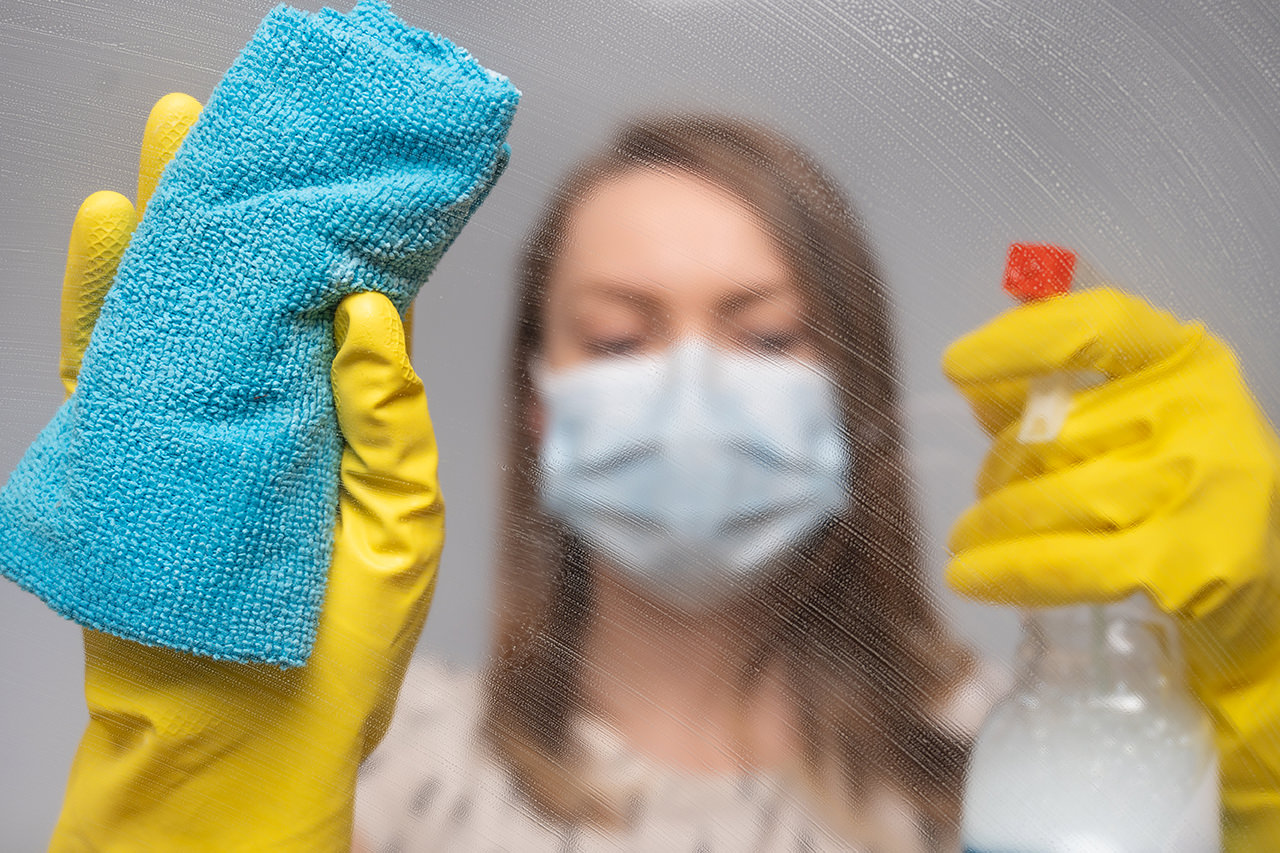
- Before you begin, ensure you stay protected by wearing adequate clothing, masks, gloves and eye protection.
- Ensure there is good ventilation when handling chemical cleaning agents to avoid inhaling fumes. Use gloves when working in a mouldy bathroom.
- Also, read the list of ingredients of the products you are using, and how they react under different conditions so as to ensure their safe use.
- Read the label to ascertain emergency measures in case of accidental exposure or ingestion of chemicals.
Cleaning Acrylic Showers
Acrylic showers are the easiest to clean. Here are the steps:
Select Suitable Cleaning Products
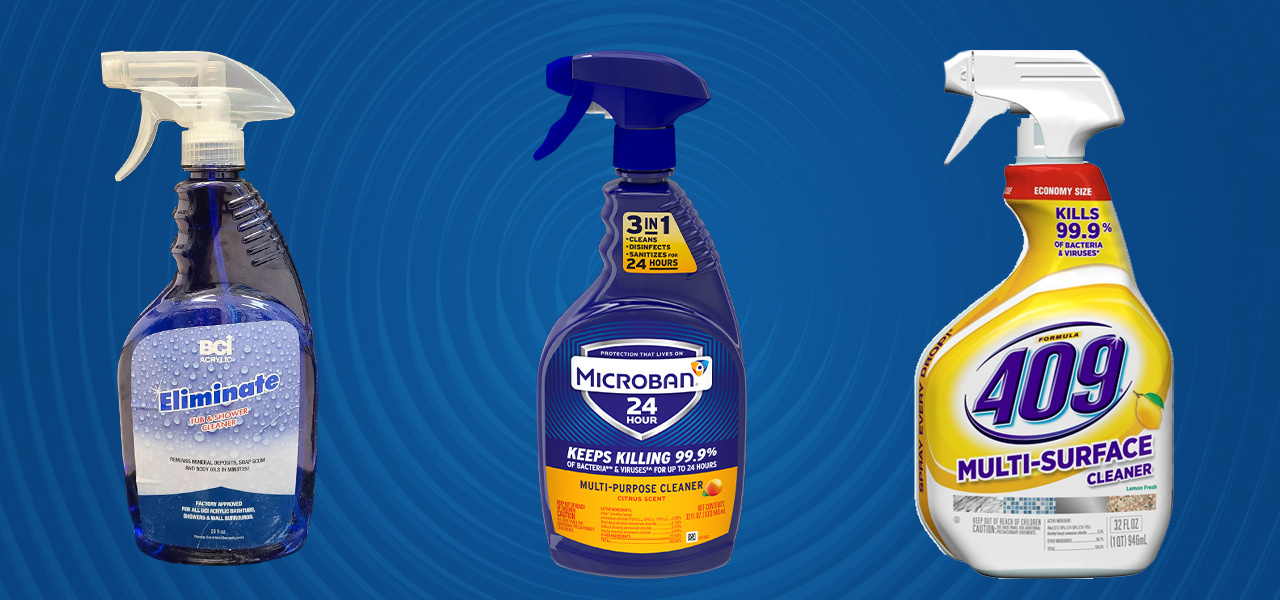
Use acrylic-appropriate, non-abrasive cleaners such as BCI Eliminate, Microban 24 Hour, or Formula 409. Alternatively, you can use a 1:1 mix of water and white vinegar. A traditional glass cleaner or the vinegar solution can be used on the glass areas.
Do not use abrasive materials such as steel wool, scourers or harsh chemical cleaners. These can scratch the surface, causing irreparable damage.
Clean the Nooks and Corners
Start with the edges of the enclosure panels and if you have accessories then dont forget them. Use a soft cloth with your preferred cleaning solution to remove soap and water buildup in these spots.
Cleaning Acrylic Panels and Glass
You can start at the top or bottom and work your way across the entire length and breadth of the shower panels. Use gentle pressure and circular or back-and-forth motions. If the panels have a lot of grime or build-up, apply the 50/50 vinegar solution, allow it to work for 10 minutes, then wipe it off. You can use the same method to clean glass shower doors, panels, the acrylic base and also the acrylic tub in bath-shower combinations.
Repeat on a regular basis
A quick wipe-down of your shower once a week is an excellent and easy way to prevent any soap scum build-up and retain the fresh look of the shower. For brassware such as shower sets, and shower valves installed inside the enclosure, as well as other non-acrylic materials, use the cleaning products recommended by the manufacturer.
Cleaning Glass Shower Enclosures
Sparkling glass shower doors and walls are stylish and practical (showcasing lovely interiors with stunning brassware), but they attract water droplets, soap scum, oil and grime that can stick to their surface. Soap scum is a challenge in bathrooms and can leave ugly soap lines on walls, glass panels and everywhere else.
Sweat not! Glass enclosures are easily cleaned with some simple tools and easy-to-follow routines.
Select Suitable Cleaning Products:
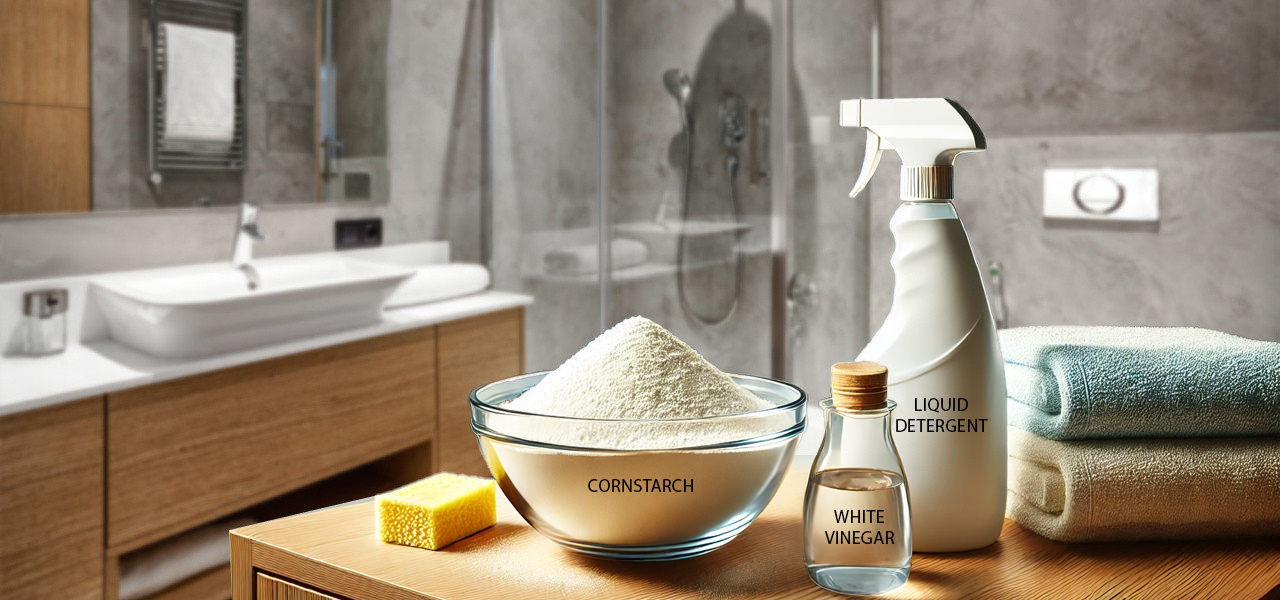
Using a mixture of cornstarch, mild liquid detergent and white vinegar will get rid of scum and any stains in a jiffy. The suggested proportions are 1:1:2 of cornstarch, vinegar and washing liquid. Spray and wipe clean and you are done. The same results can be achieved with a pasty mixture of baking soda, mixed with water or vinegar and salt.
Clean the Nooks and Corners
You can fill the cleaning solution in a spray bottle and spritz on the glass walls of the shower enclosure. Alternatively, take a wet sponge and dip it into the above cleanser and wipe across the walls. Allow the mix to sit for a few minutes and later wipe dry or spray it with clean water followed by wiping dry with a soft cloth. Pay attention to corners and difficult-to-reach areas to give the glass a perfectly squeaky clean and bright look.
Repeat on a regular basis
Ideally, glass shower enclosures should be cleaned daily using a DIY or commercial shower cleaner and then wiped clean. You can also use special glass cleaners that are readily available and are leave-in. You can also just wipe the water and build-up from the surface with a dry microfibre cloth. If you are unable to clean daily, then a weekly routine is a must. The longer you go without cleaning, the more effort and deeper cleaning will be necessary later.
Don't forget the Hardware
Shower accessories and hardware such as hinges, shower door tracks and handles can be cleaned using a soft, damp cloth dipped in mild detergent. Remove any detergent residue by rising with water and wiping dry until the surfaces shine. Never use abrasive pads or scouring agents even on metals as they are likely to scratch and damage the metal surfaces.
Solving Common Problems
Hard Water Stains
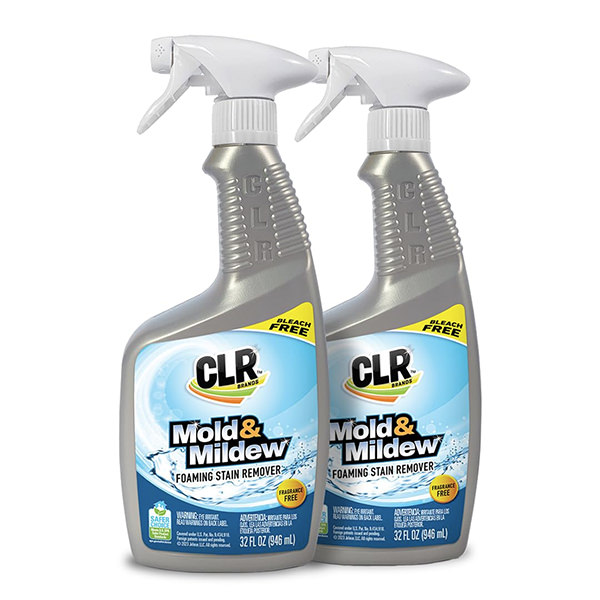
Hard water stains and marks need just a vinegar and water solution, made by mixing both in a 1:1 ratio. Apply to the stains and leave for a few minutes, before rinsing and wiping dry. You can also use commercially made stain removers like CLR-simply follow the how- to-use product instructions.
mould or Mildew Growth
The simplest way to keep away the growth of mould is regular cleaning. Also, it is important to keep the shower area dry and well ventilated. If you notice mould, use a diluted bleach solution over the area and then rinse thoroughly.
Other Tips for a Sparkling Glass Shower Enclosure
For keeping glass shower enclosures free of residue build-up, you can also try these tips.
Soften Hardwater
If you live in an area with hard water, consider getting a water-softening system. Hard water contains a number of dissolved chemicals, depositing them on walls and fixtures in the form of limescale. It can also mark glass panels permanently. It's simpler to prevent them than to expend energy and time later at a greater cost to have the deposits removed.
Use a Glass protection coating
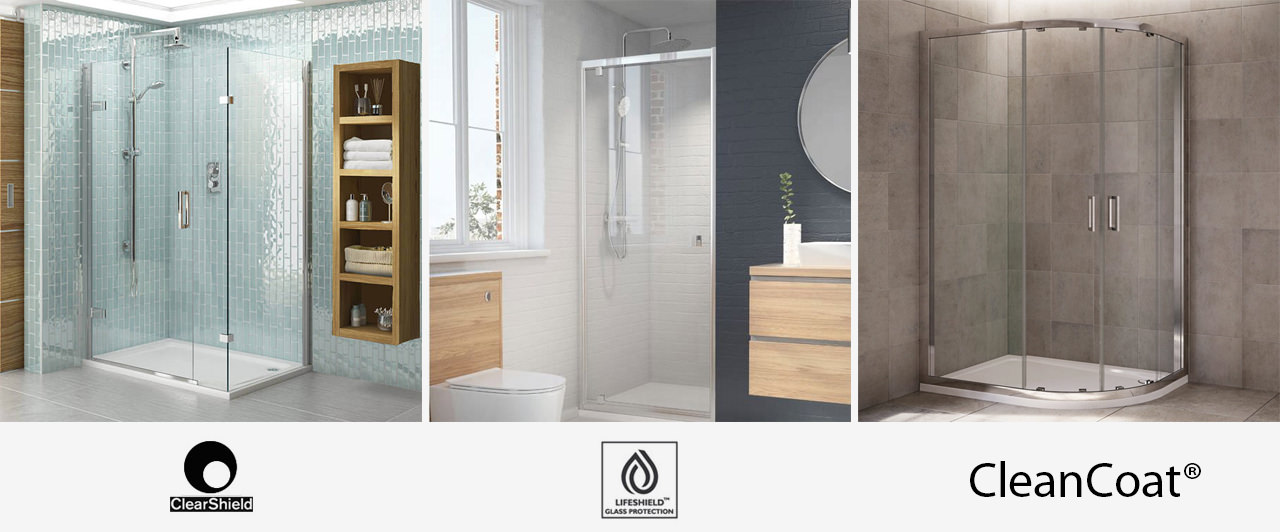
Protective glass films are an easy way to prevent any deposits or stains that may accumulate on your shower glass panels. These are also excellent for achieving a luxurious look. Rightly called repellant films, such coatings repel any water or dirt from the glass surface, keeping them effortlessly clean. Many manufacturers offer products that are already coated with glass protection coating such as ClearSheild in Aqata products, LifeShield Glass Protection in Kudos and CleanCoat® Glass Coating technology in Mira. You can also get the films installed on your enclosure panels. These coatings allows you to for longer without cleaning your glass walls without the stress of limescale or stains.
Cleaning Tiled Shower Enclosures
Cleaning of tiles within a shower enclosure requires a focus on removing soap scum. Use plastic mesh scrubbers for this purpose. The next step is the use of appropriate cleaning products meant for tiles.
Use Cleaning agents meant for tiles/glass
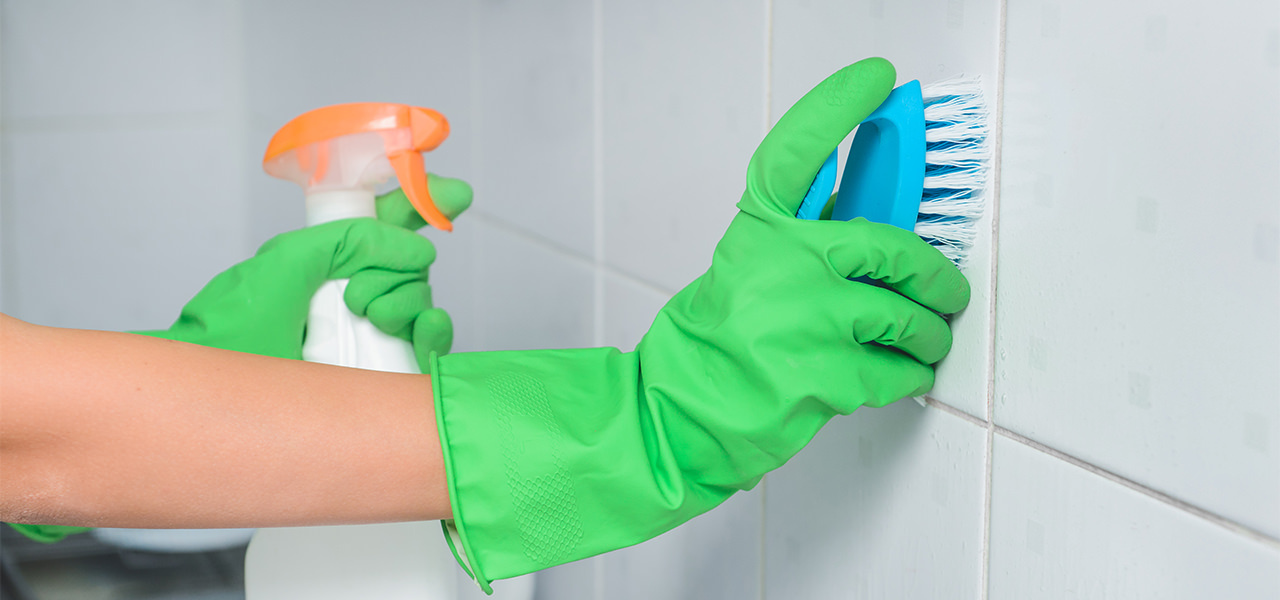
Using a pH-neutral ceramic and porcelain tile cleaner is recommended. Spray on the tiled area with a focus on the bathroom tile grout that is prime to mould and mildew. Concentrate on areas of heavy build-up, allowing the cleaning agent to work by penetrating into the tile grout. Using a grout brush or a toothbrush may be more effective in application between the tiles. After applying the product, allow air to circulate by opening doors and windows. To remove soap scum and watermarks, use a soft brush to scrub them with an alkaline cleaner. Ensure the brushes are not reused.
Repeat
Finally, rinse using clean, warm water to remove excess soap residue and cleaning products. Then let dry. Repeat if necessary.
Conclusion
Remove the nightmare of cleaning your shower enclosures with this comprehensive guide that makes it quick and easy to keep shower enclosures in excellent condition. If you're interested in revamping your shower or tiling your shower wall or floor, contact us. We have a selection of quality shower enclosures to suit every budget, style and mood. The products you select, you can trust that they will last well and look good on your property for years to come. Speak to our customer service agent today to decide which shower enclosure or accessory is right for your project, or order from our user-friendly, ultra-convenient online store to get your construction underway as soon as possible. Also check out our tips on "how to clean a shower tray."



